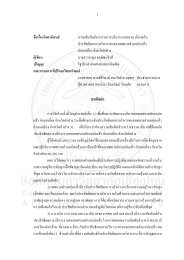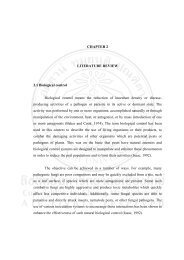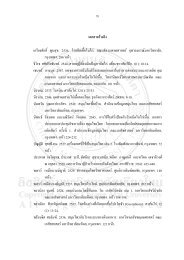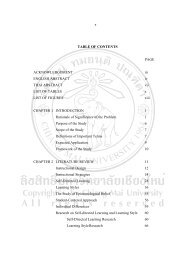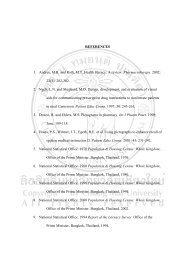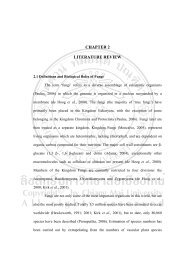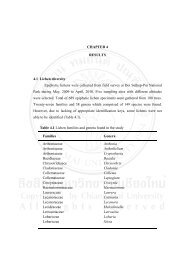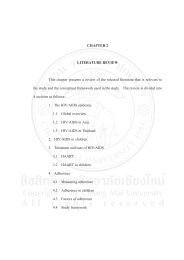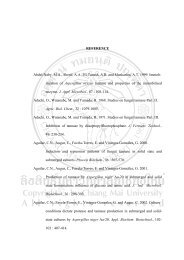CHAPTER II MATERIALS AND METHODS 2.1 Chemicals and ...
CHAPTER II MATERIALS AND METHODS 2.1 Chemicals and ...
CHAPTER II MATERIALS AND METHODS 2.1 Chemicals and ...
Create successful ePaper yourself
Turn your PDF publications into a flip-book with our unique Google optimized e-Paper software.
2.6 DNA polymerase stop assay<br />
26<br />
DNA polymerase stop assay is often employed to test whether a compound can<br />
induce intramolecular G-quadruplex formation from any particular G-quadruplex<br />
motif. The assay is based on the principle that DNA polymerase cannot traverse<br />
through an intramolecular G-quadruplex structure; therefore, primer extension by<br />
DNA polymerase will arrest when DNA polymerase encounters a stable G-<br />
quadruplex on the DNA template. The 10 l G-quadruplex forming mixture,<br />
consisting of the indicated concentration of test compound, a DNA template (VT-66,<br />
100 nM), <strong>and</strong> a FAM-labeled primer (P16, 100 nM) in 10 mM Tris-HCl buffer (pH<br />
7.4) containing 25 mM KCl, was first denatured by heating to 95 C for 5 min, then<br />
slowly cooled to 37 C, <strong>and</strong> held at 37 C for 30 min. The primer extension reaction<br />
was initiated by adding a 10 l reaction mixture consisting of 100 mM dNTPs, 3 mM<br />
MgCl2,<br />
<strong>and</strong> 1 unit of DNA polymerase I Klenow fragment (Fermentas). The reaction<br />
was allowed to proceed at 37 C for 30 min before it was stopped by adding 4 l of<br />
loading buffer (95% formamide, 10 mM EDTA, 0.1% xylene cyanol, 0.1%<br />
bromphenol blue). The samples were separated by electrophoresis in a 12%<br />
denaturing polyacrylamide gel <strong>and</strong> visualized with a phosphoimaging system<br />
(Typhoon; Molecular Dynamics).<br />
2.7 Duplex/quadruplex competition Assay<br />
Many G-quadruplex lig<strong>and</strong>s are not useful as telomerase inhibitor because they<br />
induce acute cytotoxicity, which is believed to occur from non-specific binding to<br />
double str<strong>and</strong>ed DNA. To investigate the binding preference of our perylene<br />
derivatives, we employed the duplex/quadruplex competition assay. If the compound




